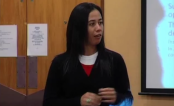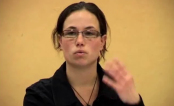Te Aho Arataki Marau mō te Ako i Te Reo Māori - Kura Auraki
Curriculum Guidelines for Teaching and Learning Te Reo Māori in English-medium Schools: Years 1-13
Curriculum guidelines 521 PDF (PDF, 4 MB)
Page navigation:
Ngā tino māramatanga whai hua mō te ako i te reo
Key understandings about effective language learning
As well as the characteristics of effective teaching and learning, there are some important understandings that apply more particularly to language learning. New Zealand language teachers need to know, in particular, about the work of Rod Ellis and about the concept of intercultural communicative language teaching.
Ellis (2003) recommends task-based language learning. He describes an effective language learning task as one that:
- requires the students to focus primarily on meaning
- has some kind of gap that the students can close by communicating
- requires the students to construct their own productive language (language output) rather than only to manipulate language that the teacher provides (language input)
- has a clearly defined outcome (other than producing “correct” language).
Language teachers can construct tasks that reflect real-life communication as closely as possible and that establish a genuine need for communication. For example, teachers can ask their students to seek or provide the information needed to complete a task successfully. If an activity involves a student asking to be told something that they already know, the activity is not a communicative one – and the students are not likely to find it rewarding.
Ellis has also identified ten principles of effective language teaching (refer to Ministry of Education, 2005). These are described and exemplified in the booklet Instructed Second Language Acquisition: Case Studies (Ministry of Education, 2006), which was sent to all schools. While Ellis says that the teacher’s main focus in language learning classes should always be on pragmatic meaning in the context of authentic interactions, he emphasises that students also need opportunities to focus on the language form they are using. These opportunities may arise in the course of negotiating with other speakers to repair breakdowns in communication (developing strategic competence).
Intercultural communicative language teaching (iCLT) is an approach that complements Ellis’s principles of effective language teaching and goes further, by clarifying the essential role of culture in language learning and in developing the key competencies of the curriculum. This approach to teaching languages builds students’ awareness and knowledge of languages and cultures, fosters their development of positive attitudes about themselves and other people, and celebrates the unique nature of every language, every culture, and every person.
Intercultural communicative language teaching and learning (iCLT):
- integrates language and culture from the beginning
- engages learners in genuine social interaction
- encourages and develops an exploratory and reflective approach to culture and culture-in-language
- fosters explicit comparisons and connections between languages and cultures
- acknowledges and responds appropriately to diverse learners and learning contexts
- emphasises intercultural communicative competence rather than native-speaker competence.
Newton et al., (2009, in development), p.59
Students are more likely to succeed in learning te reo Māori when their teachers:
- combine learning about te reo Māori with learning about tikanga Māori
- take a communicative approach to teaching and learning
- embed teaching and learning about language forms, including grammar and vocabulary within that communicative approach.



